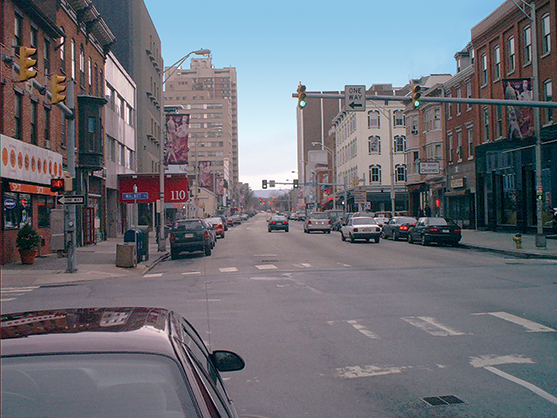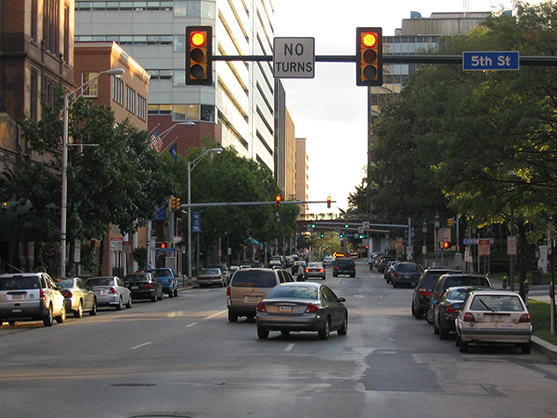Signal System Timings

To maximize traffic flow along a corridor, closely spaced signals are inter-connected, creating a coordinated signal system. Coordination refers to the timing of the signals so that a platoon of vehicles traveling on a street arrives at a succession of green lights and proceeds through multiple intersections without stopping. Coordination facilitates smooth traffic flow (progressed movement) along a street. Typically, the busiest traffic movements are given priority in traffic coordination as the goal of coordination is to get the greatest number of vehicles through the system with the fewest stops.
Depending on the route, the master cycle length could vary from 60 to 120 seconds. Generally, the busier and the bigger the intersection, the longer the required cycle length. Common practice is to coordinate signals less than one-half mile apart on major streets and highways.

Though traffic signal coordination is a major element in the effort to maximize traffic flow and improve the performance of the street system, not all streets warrant coordination. A street is selected for coordination if it carries a certain amount of traffic along the major route during peak hours. In most cases, coordination is active during busier time periods, which could include the morning and afternoon peak periods on weekdays on less busy corridors or all day on busier corridors. Outside of these hours, the individual signals operate on a "first-come-first-served" or traffic activated basis. Coordinated signal systems result in fewer stops on the major street. Fewer stops will lead to improved traffic flow, fewer crashes, more uniform vehicle speeds, as well as reduced fuel consumption, pollutant emissions, and operating costs. The benefits of coordinated signal timing are well known.
Coordinated signals require interconnection between the signals, which can be accomplished by one of the following methods:
- Copper cable (wired connection)
- Fiber optic cable (wired connection)
- Radio communication (wireless communication via transmitters, receivers, and repeaters mounted on all signals)
- GPS time-based coordination (wireless coordination via synchronized time clock)
Fiber optic offers the best data transfer between signals, but can be costly to install. GPS is simplest to install if the interconnection is being retrofit on existing signals.
Advantages of good traffic progression:
- Improved traffic flow
- Fewer crashes
- More uniform vehicle speeds
- Reduced fuel consumption, pollutant emissions, and operating costs
There are various computerized traffic simulation models to design and develop proper coordinated signal timings. Some of the programs in current use include Synchro and TRANSYT-7F.
Traffic signals can be programmed to have different signal timing plans, depending on the time of day. Management of the coordination should be done on an on-going basis. The efficiency of a coordinated signal system should be evaluated and maintenance improvements (such as timing adjustments to the individual signals) implemented to obtain maximum performance.


